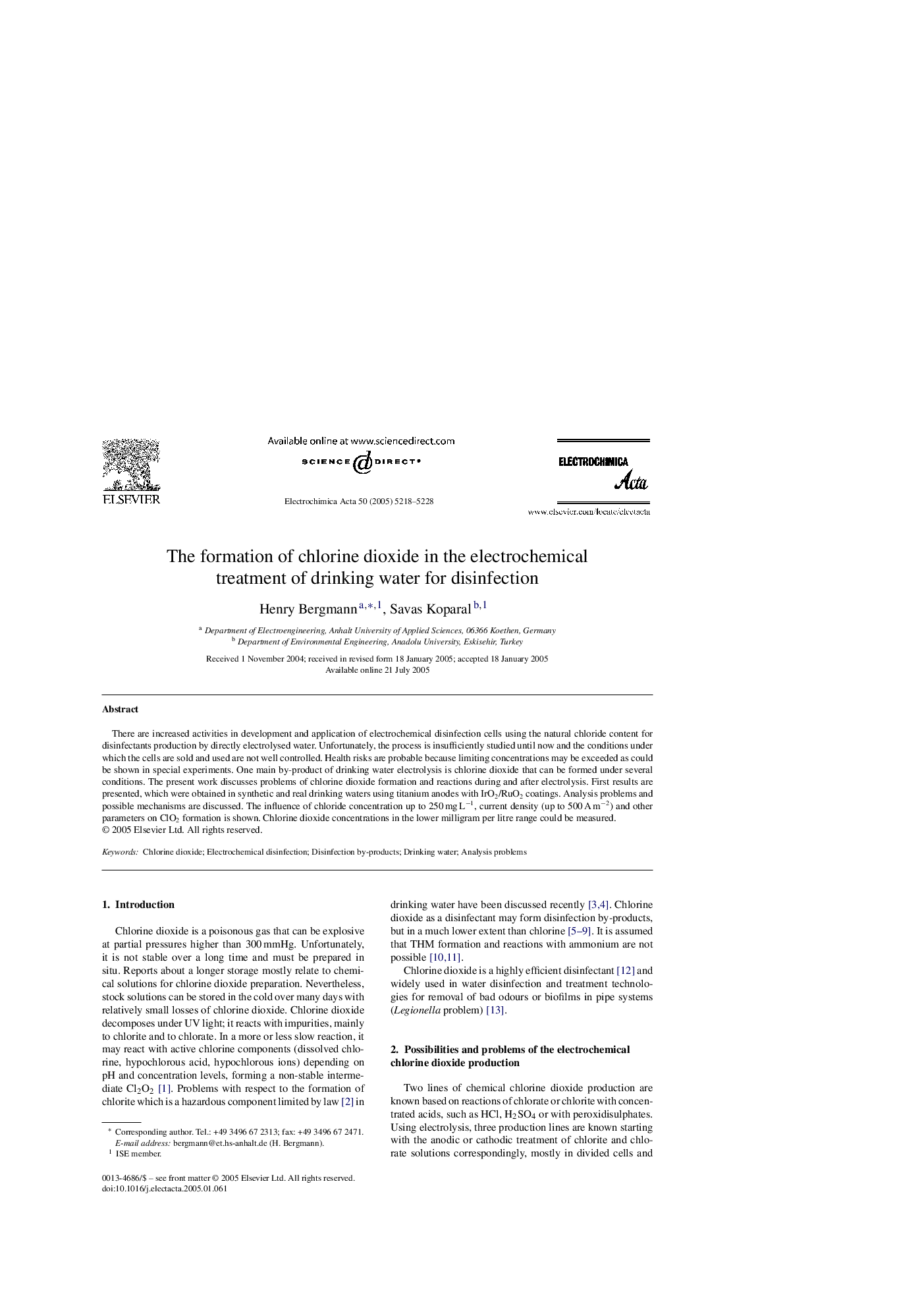| Article ID | Journal | Published Year | Pages | File Type |
|---|---|---|---|---|
| 197048 | Electrochimica Acta | 2005 | 11 Pages |
There are increased activities in development and application of electrochemical disinfection cells using the natural chloride content for disinfectants production by directly electrolysed water. Unfortunately, the process is insufficiently studied until now and the conditions under which the cells are sold and used are not well controlled. Health risks are probable because limiting concentrations may be exceeded as could be shown in special experiments. One main by-product of drinking water electrolysis is chlorine dioxide that can be formed under several conditions. The present work discusses problems of chlorine dioxide formation and reactions during and after electrolysis. First results are presented, which were obtained in synthetic and real drinking waters using titanium anodes with IrO2/RuO2 coatings. Analysis problems and possible mechanisms are discussed. The influence of chloride concentration up to 250 mg L−1, current density (up to 500 A m−2) and other parameters on ClO2 formation is shown. Chlorine dioxide concentrations in the lower milligram per litre range could be measured.
